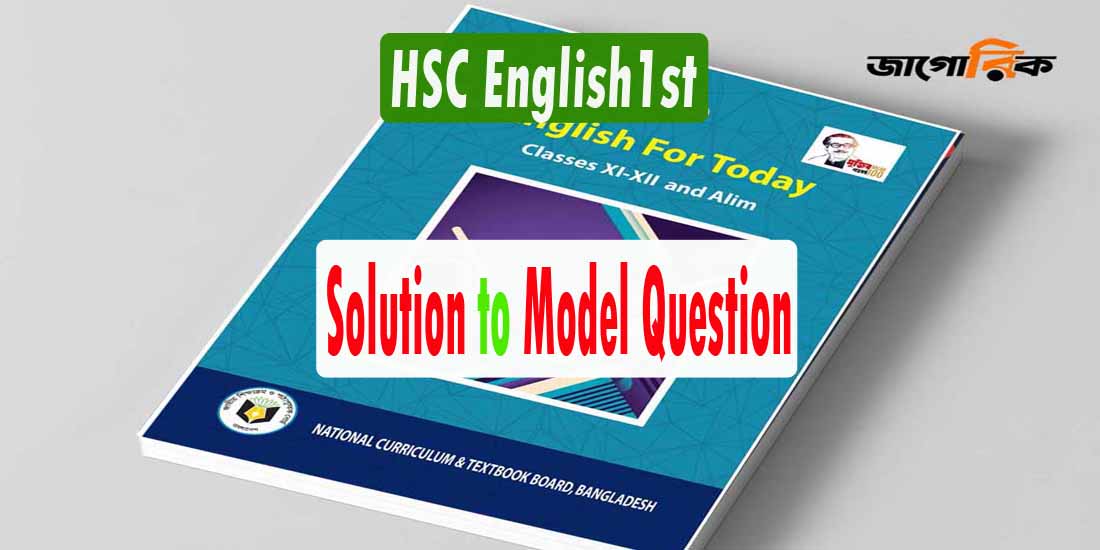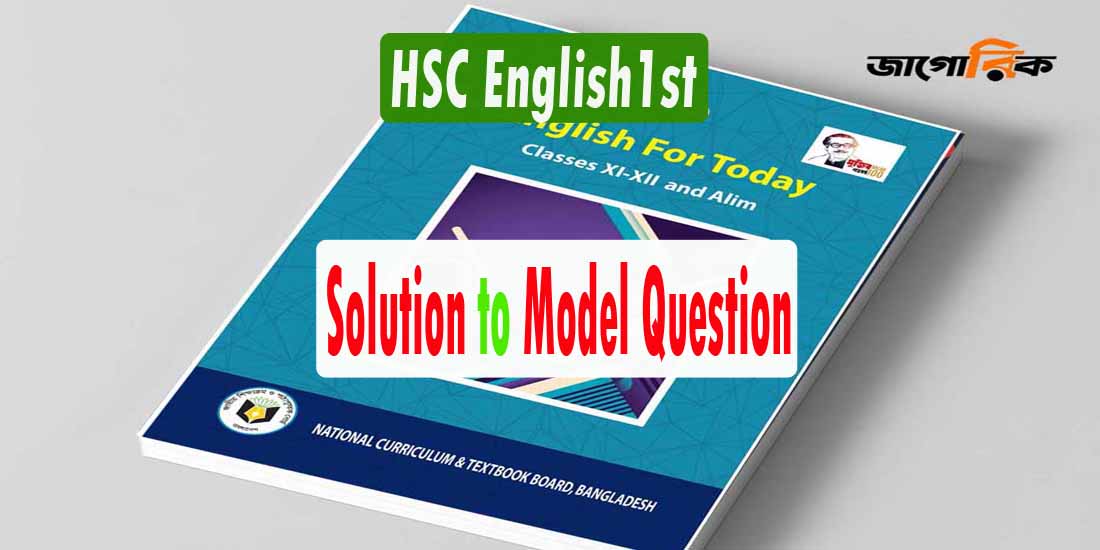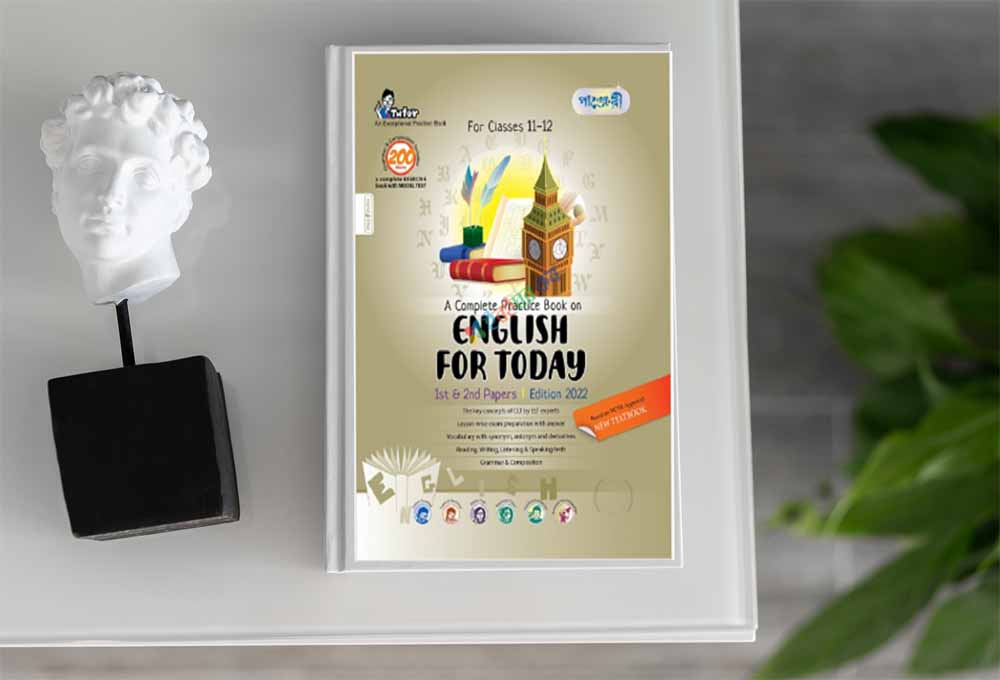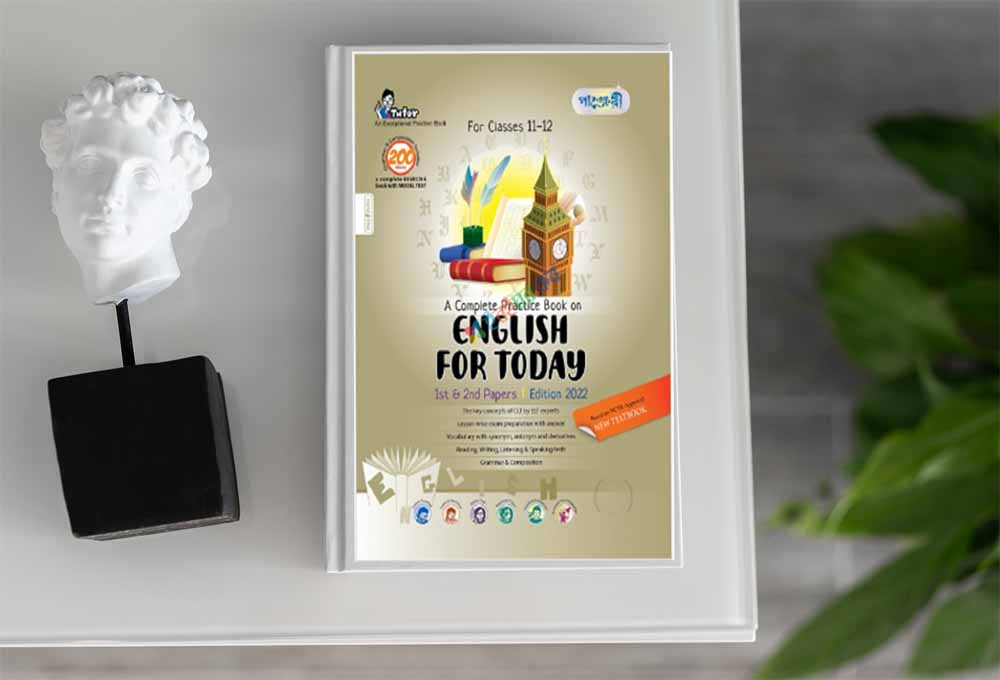HSC English1st paper model question with answer pdf 64-66
Solution to Model Question-64
1.A.(a) (ii) conception (b) (ii) praise (c) (iii) express (d) (i) wish for (e) (ii) Romantic (f) (i) describe (g) (iv) particularity (h) (iii) common (i) (ii) limit (j) (iv) extensive (k) (iii) appetite (l) (ii) unknown (m) (ii) neglect (n) (iii) give (o) (iii) factor (p) (ii) John Keats (q) (iv) in 1824 (r) (iii) American (s) (iii) in 1830 (t) (ii) John Keats (u) (iv) delightful (v) (i) embody (w) (ii) John Keats (x) (i) art cannot ignore ugliness (y) (iii) moderately good (z) (ii) viewer (aa) (iv) to limit (bb) (ii) inseparable (cc) (ii) we can appreciate beauty easily but explain it in a difficult way (dd) (ii) attractiveness (ee) (iii) beauty and ugliness.
(a) Beauty is difficult to define because it has no independent objective identity. It is dependent on our sense perceptions. Another reason of its difficulty is that beauty manifests itself not only by its presence but by its absence as well.
(b) “Truth is a condition of art” means that the context of art must be true because truth, even if it’s not pleasant, becomes beautiful at a higher level. Similarly, what is beautiful remains true forever.
(c) Beauty is something which is easy to appreciate but difficult to define. We find beauty in pleasurable objects and sights in nature, in the laughter of children, in the kindness of strangers.
(d) People discover beauty in their surroundings such as in nature, in the laughter of children, in the kindness of strangers.
(e) Yes, I think so. Ugliness has also importance in our life because it has as much a place in our life as beauty, or may be more. Moreover, when we are repulsed by ugliness, we desire for beauty and thus beauty manifests itself by its absence.
(f) We can discover beauty in our surroundings such as in nature, in the laughter of children, in the kindness of strangers.
(g) When we are repulsed by ugliness, we desire for beauty and thus it manifests itself by its absence.
(h) Ugliness has as much a place in our life as beauty, or may be more.
(i) By this quote the poet means that truth, even if it’s not pleasant, becomes beautiful at a higher level.
(j) John Keats, Lord Byron and Emily Dickinson are the poets that are mentioned in the passage. The ‘Ode on a Grecian Urn’ is written by Keats. ‘She Walks in Beauty’ is written by Lord Byron and “I died for Beauty” is written by Emily Dickinson.
(k) Yes, I agree with the statement. To seek beauty is very natural to all human beings whether in happiness or sorrows. Those who are happy want beauty and those who are not happy want beauty too. So, the statement is absolutely true.
(l) Beauty manifests itself not only by its presence but by its absence as well.
(m) Poets and artists incorporated both beauty and ugliness into their work. They have often tied beauty to truth and justice, so that what is not beautiful assumes a tolerable proportion as something that represents some truth about life.
(n) In ‘Ode on a Grecian Urn’ John Keats says ‘Beauty is truth, truth beauty’. Keats wants to say that truth, even if it’s not pleasant, becomes beautiful at a higher level. Similarly, what is beautiful forever remains true.
(o) No, art cannot. Art cannot ignore what is not beautiful because it is also an important part of our life. What is not beautiful assumes a tolerable proportion in art as something that represents some truth about life.
(p) One faces problem to explain beauty because beauty is easy to appreciate but difficult to define.
(q) A person can feel the existence of beauty in pleasurable objects and sights in nature and in the laughter of children, in the kindness of strangers etc.
(r) Beauty and truth are intra-related because truth, even if it is not pleasurable becomes beautiful at a higher level. Similarly what is beautiful remains true forever.
- (i) A flow chart showing the various aspects of beauty is given below :
| 1. Easy to appreciate but difficult to define | ® | 2. Universal | ® | 3. Important part of life | ® | 4. Manifesting by both its presence and absence | ® | 5. Living in the eye of beholder | ® | 6. Pleasurable objects |
(ii) A flow chart showing the effect of beauty on poetry is given below :
| 1. Incorporating beauty to truth | ® | 2. Strong appeal in poetry | ® | 3. Having relationship among beauty, purity and love | ® | 4. Expressing one’s feeling towards beautiful persons | ® | 5. Comparing one’s beauty with different natural objects | ® | 6. Finding attachment and kinship between beauty and truth |
Or, (i) Beauty (ii) pleasurable objects and sights (iii) Philosophers (iv) Poets and artists (v) represents some truth about life (vi) John Keats (vii) celebrates beauty and truth (viii) 1788-1824 (ix) date of birth and death (x) America
This passage gives a clear description of beauty comparing with art, truth, ugliness and other natural aspects. Beauty reminds its existence by its presence as well as absence. Ugliness is totally opposite to beauty. Though ugliness is not desirable both ugliness and beauty are part of our life. Poets and artists compared beauty with truth. Truth may be unpleasant but it becomes beautiful at higher level. John Keats, Lord Byron, Emily Dickinson and other poets emphasized about the relationship and kinship between beauty and truth on their writings.
HSC English1st paper model question with answer pdf 64-66
Solution to Model Question-65

A.(a) (i) latest (b) (ii) tradition (c) (ii) spontaneous (d) (ii) heart (e) (iv) spiritual (f) (iii) subtle (g) (i) inheritance (h) (iii) rural folk (i) (iv) demonstration (j) (ii) non-spiritual (k) (iv) immaterial (l) (iv) area (m) (ii) supernatural (n) (i) send (o) (iii) spoken (p) (ii) joys and sorrows of life (q) (iv) provincial language (r) (i) excite emotion (s) (iv) non-religious (t) (iv) spontaneous (u) (iii) local language
- (a) Folk music is the type of ancient music which springs from the heart of a community. It is based on their natural style of expression, uninfluenced by the rules of classical music and modern popular songs.
(b) Folk music reflects the culture, festivals, views of life, natural beauty, rivers, rural and riverine life.
(c) Mystical songs are one kind of folk song. It is a spiritual song which has been composed of using the metaphors of rivers and boats.
(d) Bhatiyali music is mainly the music of boatmen and fishermen. It is mostly sung in Mymensingh district along the Bahmaputra river. The lyrics are about boating, fishing and rivers. The lyrics make the Bhatiyali an important genre.
(e) Folk music is formed and develops according to the environment. Differences is the natural environment are reflected in the people of the different regions. The dialects too vary across the different regions. That’s why, Bangladeshi folk music varies from region to region.
(f) Folk music consists of songs and music of a community that are uninfluenced by any sophisticated music rules or any standard music styles.
(g) Folk songs may be sung individually or in chorus. Folk songs sung individually include Baul. Bhatiyali, Murshidi and Marfati, while songs sung in chorus include Kabigan, Leto, Alkap and Gambhira.
(h) The culture and the lifestyle of the different tribes have also influenced folk music. Tribes like the Santal, Garo, Hajong. Chakma, Manipuri, Tripuri, Marma etc. have interacted with ethnic Bengali culture and lifestyle over the years. The interaction has been clearly reflected in the richness of folk music.
(i) Bangladeshi folk music varies from region to region. The dialects too vary across the different regions. There are the northern Bhawaiya, the eastern Bhatiyali and the southwestern Baul songs.
(j) Women only sing Bratagan and Meyeli Git. But both men and women participate in the ‘roof-beating’ songs that are sung while beating down and firming rooftops.
(k) Folk music is a music of a community that are uninfluenced by any sophisticated musical rules or any standard music styles.
(l) Both religious and secular songs are included in Bangladeshi folk music.
(m) The name of different folk songs are Baul, Jarigan, Bhawaiya, Gambhira, Sari, Bhatiyali etc.
(n) The main source of folk music is the heart of a community from which it springs based on their natural style of expression.
(o) Folk music is a combination of folk song, folk dance and folk tune.
(p) The aspects of folk music that I like are the spontaneous expression in easy language, local dialect and simple tune.
(q) It is both composed and performed by illiterate and semi-literate people.
(r) Our folk songs have universal appeal. But these songs are sung in local dialect. I think the reason is of its spontaneity. Moreover folk songs are written and performed by illiterate or semi-literate people who know only their mother tongue.
(s) Folk song normally expresses the incidents of our day to day life. It describes the soorows and joys of our private and national life. So it is rightly said that it is an explicit manifestation of the joys and sorrows of daily life.
(t) There exists a relationship among them. Because folk song is an explicit manifestation of the joys and sorrows of daily life. It contains a strong emotive expression of human love and separation.
(i) A flow chart showing on what things folk music is composed is given below :
| 1. Culture | ® | 2. Festivals | ® | 3. Views of life | ® | 4. Natural beauty | ® | 5. Rivers and rural and riverine life | ® | 6. Social inequality and poverty |
(ii) A flow chart showing some particular characteristics of folk music is given below :
| 1. No influence of modern music | ® | 2. Singing in groups or by individual | ® | 3. Practising it regularly not mandatory | ® | 4. Easy language, local dialect, simple tune | ® | 5. Expressing human love, separation spontaneously | ® | 6. Simple and natural rhythms |
Or, (i) composition (ii) Folk songs (iii) social inequality and poverty, about the material world and the supernatural (iv) composition (v) using the metaphors of rivers and boats (vi) being formed and developed (vii) from region to region (viii) Bhawaiya (ix) origin (x) southwestern part of Bangladesh
This passage gives us a clear view on folk music. It is an essential part of Bangladeshi culture. It is ancient and different from modern and classical songs. It is a particular combination of folk songs, dance and tune. It is a spontaneous expression of human love and separation which may be sung in groups or by individuals. The singers of folk songs may be illiterate or semi literate. But they do it from their heart through a very natural way which depends on nature and rural environment.
HSC English1st paper model question with answer pdf 64-66
Solution to Model Question-66

1.A.(a) (i) miraculous (b) (iii) spiritual (c) (ii) not literal (d) (iv) style (e) (ii) folk music varies from place to place (f) (i) outlook (g) (iii) difference (h) (iii) metaphor (i) (iii) diversity (j) (ii) manifest (k) (iii) mystical songs (l) (i) flourished (m) (iii) regional language (n) (iv) effect (o) (ii) seven (p) (i) distinctively (q) (ii) to be a part of a particular type (r) (i) to take part in (s) (ii) only (t) (ii) the top covering of a building (u) (i) traditional (v) (iii) songs while repairing roof (w) (iv) northern (x) (i) characteristic (y) (i) individually (z) (iii) colony (aa) (ii) constitute (bb) (iv) Pop (cc) (i) likewise (dd) (i) northern region (ee) (ii) eastern region (ff) (iii) south western region (gg) (i) singing in group (hh) (iv) work together (ii) (iii) area (jj) (iv) local language (kk) (iv) riverine (ll) (iii) Mystical songs (mm) (i) Depending on the environment (nn) (iii) a tribe (oo) (i) riverine
(a) Folk music is formed and developed according to the environment. Differences in the natural environment are reflected in the people of the different regions. The dialects too vary across the different regions. Bangladeshi folk music, therefore, varies from region to region.
(b) According to the passage, there are three types of folk music in Bangladesh such as the northern Bhawaiya, the eastern Bhatiyali and the southwestern Baul songs.
(c) The culture and the lifestyle of the different tribes have influenced folk music too. Different tribal community have interacted with ethnic Bengali culture and lifestyle over the years. The interaction has been clearly reflected in the richness of folk music.
(d) Folk songs may be sung individually or in chorus. Folk songs sung individually are- Baul, Bhatiyali, Murshidi and Marfati. On the other hand, folk songs sung in chorus are like Kabigan, Leto, Alkap and Gambhira.
(e) There are some songs that are sung by the male. The songs sung by both the male and female are roof-beating song. They sung it while beating down and firming rooftops.
(f) The main themes of Folk Songs are social inequality, poverty, material world and supernatural things.
(g) Folk musics are composed of the culture, festivals, views of life, natural beauty, rivers and rural and riverine life.
(h) Mystical song is one kind of folk song. It is a spiritual song which has been composed of using the metaphors of rivers and boats.
(i) Bhatiyali is a mystical song. Since Bangladesh is a land of rivers, this song has become an important genre of folk music.
(j) Yes, I support this statement because we know that folk music depends on natural environment and dialects. Both dialects and environment vary from region to region. Therefore, folk music also varies from region to region.
(k) The name of some folk songs and their respective regions are, such as- the northern Bhawaiya, the eastern Bhatiyali and the southwestern Baul songs.
(l) There are several tribes such as Santal, Garo, Hajong, Chakma, Manipuri, Tripuri, Marma that have been mentioned in the excerpt.
(m) Our folk music is enriched due to the interaction of culture and the lifestyle of different tribes.
(n) Yes I know. Only women compose and sing Bratagan and Meyeli Git.
(o) Roof-beating songs are songs that are sung by both men and women while beating down and firming rooftops.
(p) We can differentiate folk music from modern music by their origin, style and listeners, besides their similarities. The first difference between them is the origin. Folk music brings us to the world of peacefully beautiful countryside and benevolent people with the melodiously traditional musical instrument. On the other hand, modern music mentions more various contents like the senses of human, happiness, sadness or upset.
(q) ‘Bhawaiya’ is derived from the word ‘Bhawaiya’ which is subsequently derived from the word ‘bao’ (breeze). The derivative of the word ‘Bhawaiya’ is Bhave>Bhao + Iya = Bhawaiya. So the derivative meaning of this word is emotionally charged. According to the famous singer Abbas Uddin, “This song is like the random and pleasant wind blowing from North Bengal and it is named as Bhawaiya.”
(r) Bhatiyali is a form of folk music in West Bengal and Bangladesh. Bhatiyali is a boat song, sung by boatmen while going down streams of the river, as the word Bhatiyali comes from Bhata or downstream.
(s) There are some varieties of folk music in Bangladesh. They are – the northern Bhawaiya, the eastern Bhatiyali and the southwestern Baul songs. Among these I like boatmen song or Bhatiyali because its passion attracts me very much.
(t) Mystical songs use the metaphors of rivers and boats.
(u) Songs like Kabigan, Leto, Alkap and Gambhira are sung in chorus.
(v) Bangladeshi culture, festivals, views of life, natural beauty, rivers and rural life have influenced folk music. Again the culture and lifestyle of the different tribes have also influenced folk music.
(w) Baul song is the combination of creation, life style, religion, society and human emotions.
(x) Generally we find roof beating songs in both urban and rural areas while beating down and firming rooftops.
(y) Folk music is composed of the culture, festivals, views of life, natural beauty, rivers and rural and riverine life.
(z) The form and development of folk music depend on the environment.
(aa) Folk songs reflect social inequality and poverty.
(bb) Bratagan and Meyeli Git are sung by only women.
- (i) A flow chart showing the influence of different objects on folk music is given below :
| 1. Effect of natural beauty | ® | 2. Rivers and riverine life | ® | 3. Environmental impact | ® | 4. Effect of language | ® | 5. Tribal and cultural effect | ® | 6. Effect of religion |
(ii) A flow chart showing some differences of folk music is given below :
| 1. Singing individually or in chorus | ® | 2. Having regional character or common in two countries | ® | 3. Having difference in religious community while others cross religious boundaries | ® | 4. Perform by only men or only women | ® | 5. Having difference in songs in different lore | ® | 6. Having regional difference in the same country |
In Bangladesh, folk songs have been composed on the culture, festivals, natural beauty, view of life etc. Mystical songs have been composed using the metaphors of rivers and boats. Bangladeshi folk music varies from region to region.
Thus Bhawaiya, Bhatiyali and Baul songs have enriched our folk culture. The culture and lifestyle of different tribes have also influenced folk music. There are also Kabigan, Leto, Alkap and Gambhira. Some songs are common to both Bangladesh and West Bengal. These songs are enjoyed by people irrespective of religion or gender.
উক্ত বিষয় সম্পর্কে কিছু জানার থাকলে কমেন্ট করতে পারেন।
আমাদের সাথে ইউটিউব চ্যানেলে যুক্ত হতে এখানে ক্লিক করুন এবং আমাদের সাথে ফেইজবুক পেইজে যুক্ত হতে এখানে ক্লিক করুন। গুরুত্বপূর্ণ আপডেট ও তথ্য পেতে আমাদের ওয়েবসাইটে ভিজিট করুন।













